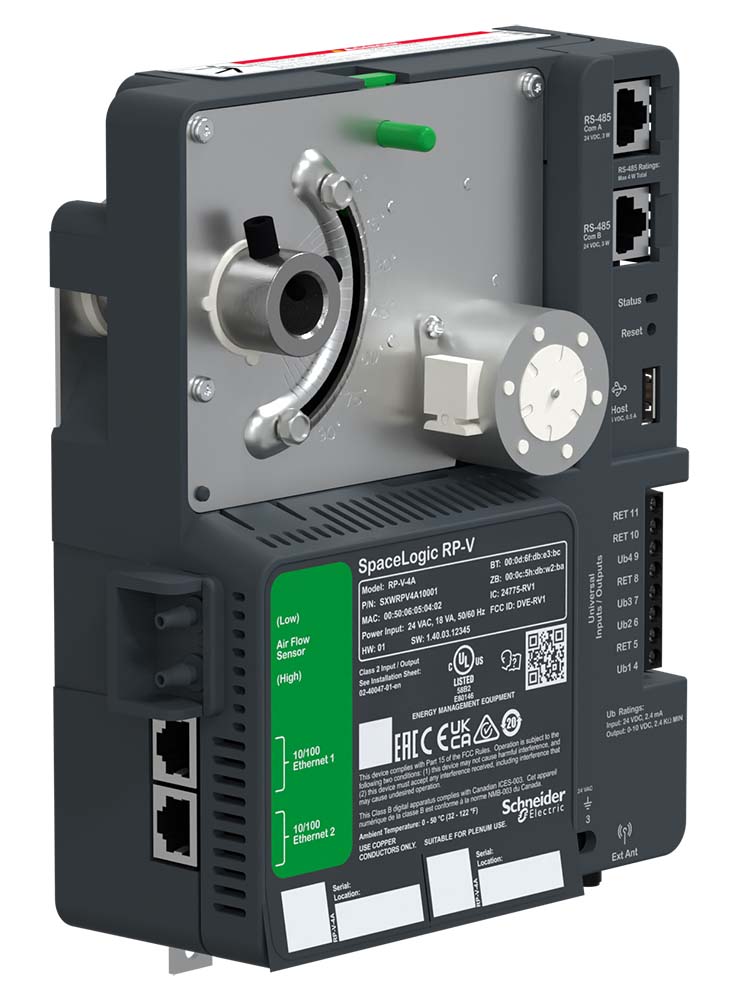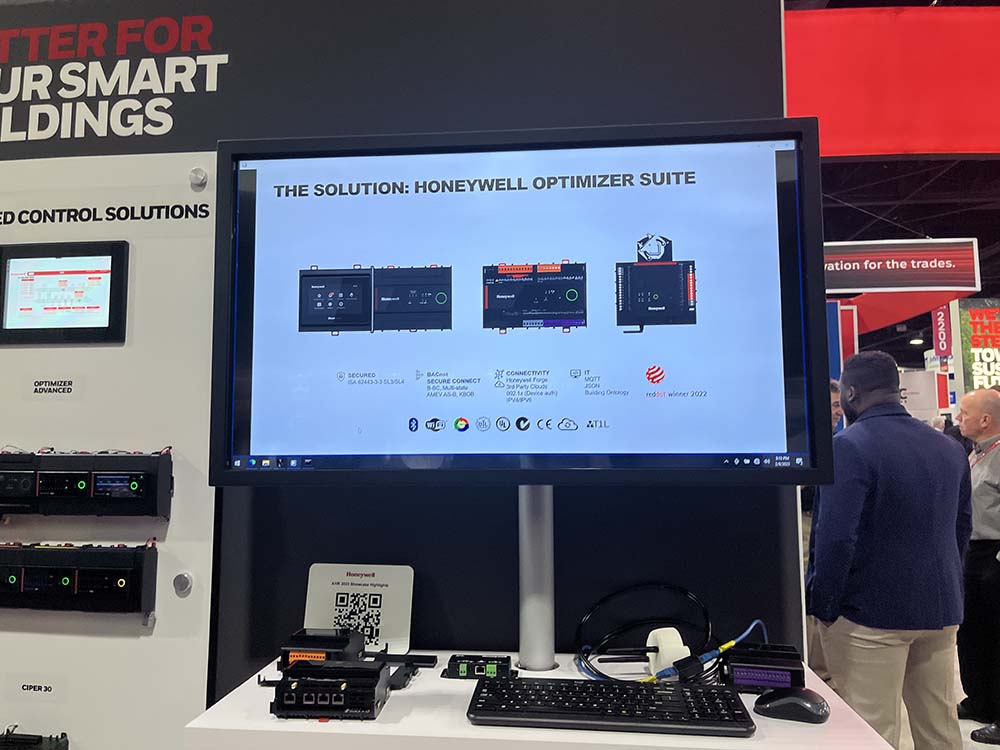When it comes to controls and building automation, these days it’s all about meeting every single need of building occupants, within one solution.
At this year’s AHR Expo, the most popular trends within this realm were improving energy efficiency and making buildings more adaptable to the ever-changing needs of occupants (meaning improving indoor air quality and overall comfort) — all while streamlining workflow to make things easier than ever for HVACR contractors. There was also a greater emphasis on cybersecurity and digitization.
Marketing director, building products
Siemens Smart Infrastructure USA
Siemens
With most buildings still not digitalized, it’s an ongoing endeavor to deliver solutions to address today’s operations and workforce challenges, said Leann Whalen, marketing director, building products, at Siemens Smart Infrastructure USA. One way Siemens helps with this is by streamlining workflow.
“We are committed to driving transformation in this industry with solutions that are flexible to address any building size or age, making buildings smarter, easier to manage, and easier to upgrade,” Whalen said.
Siemens’ solutions are purpose-built for contractors, meaning they are designed using input from contractors in order to simplify installation and commissioning, with less complexity. One example is the Climatix RTU Optimization Solution.
With the majority of buildings using RTUs (and many of the RTUs older than 15 years), this solution from Siemens (part of Siemens Xcelerator open digital platform) includes a preprogrammed controller along with sensors that are simple for contractors to install and configure to improve RTU performance for energy savings and IAQ.
“The commissioning process is simplified in a way that helps reduce labor needed at the jobsite and provides access to real-time remote monitoring that reduces unnecessary truck rolls,” said Whalen.
A variable frequency drive (VFD) is inside the controller to maximize energy efficiency; this also helps improve the operational motor, with sensors to monitor the air pressure.
The controller works with any brand of RTUs and provides direct connection through Wi-Fi. It saves time because of the “brains” that are already placed into the controller’s configuration before it even gets in the hands of a contractors, so that users don’t have to spend time configuring it themselves.
“So they don’t have to do any programming. We set it up with all the core applications … Four applications are built into the controller, which is why you can get a junior tech up on the rooftop to do the work [normally a more experienced tech] would do,” Whalen said.
Schneider Electric
Sustainability in the controls and building automation space continues to grow in importance, and it’s a major factor in new projects — as is being able to understand how to improve energy efficiency in new and existing buildings, said Brian Hanchey, U.S. country offer manager for Schneider Electric. Schneider’s products are standards-based, which provides the opportunity to incorporate third-party systems when needed, offering even greater flexibility.

INSIGHT: The RP-V VAV Controller features an Insight sensor which can detect how many occupants in the room using thermal imaging. (Courtesy of Schneider Electric)
This year, Schneider Electric debuted the RP-V Variable Air Volume (VAV) Controller to be able to provide a connected room experience in VAV environments. It works by providing near real-time people-counting data to provide demand-based ventilation, which in turn offers energy savings and improved comfort for occupants, said Hanchey.
In addition to being a native BACnet device and fully programmable, the RP-V VAV controller has additional flexibility, such as the Insight sensor.
“The Insight sensor communicates over Modbus with a single category cable … It bring temperature, humidity, and motion detection with a PIR sensor, but it also brings in some cool stuff like ambient noise,” said Jeff Morton, staff engineer at Schneider Electric.
That function allows for the level of the noise in an environment to be monitored, which comes in handy in a place like a hospital, where patients are trying to recover and get healthy, or at a hotel (for example, if a guest were to complain about noise, and the manager needed to determine which parts of the hotel were quietest for them).
Another value the RP-V VAV Controller brings, and Morton’s favorite, is the people count. It consists of a thermal imaging sensor that for a 25-foot diameter, when mounted at 10 feet, can count the warm bodies within it.
“Historically, we’ve had to sense occupancy with passive infrared (PIR), like motion detection. The problem with PIR is you can't tell the difference between one person or a conference room that's got 20 people,” said Morton.
Over-ventilation is often the result of using PIR to detect occupancy. Large amounts of fresh air are paid for because the PIR assumes whatever room it’s in is a full room, and when more fresh air than is needed is provided, energy and money are wasted.
“In contrast, this allows us to see exactly how many people are in the space. So we can provide exactly the amount of fresh air needed for that many people,” said Morton.
Honeywell
Dynamic, responsive buildings are becoming more and more prominent within the HVACR industry.
Building management systems (BMS) are increasingly leveraging advanced software with artificial intelligence (AI) and machine learning (ML) capabilities in order to optimize both energy efficiency and occupant well-being, said Michael Garceau, building management systems general manager, Americas, at Honeywell Building Technologies.
This year at the AHR Expo, Honeywell debuted the Honeywell Optimizer Suite, its latest generation of IP controllers.

OPTIMIZING: The Honeywell Optimizer Suite provides the highest level of cybersecurity available. (Staff photo)
“The Optimizer Suite includes a VAV Controller … to help any existing building system enjoy the same advantages of IP control as a new state-of-the-art facility. The open-protocol suite leverages the powerful Niagara Framework and is designed to enable more efficient installation and commissioning, provide greater cybersecurity protection, be more energy efficient and be easier to maintain with better system operability,” said Garceau.
The Optimizer Suite is a solution under the overarching Honeywell Building Sustainability Manager (HBSM) module, and includes a suite of building controllers that work across multiple types of buildings. There’s an advanced fan controller for a larger enterprise, a unitary controller for smaller enterprises, and a VAV controller.
“The key thing with these controllers is that they integrate fully with all of the wall modules … but what the focus area is for these controllers is advanced cybersecurity. As IT and OT (operational technology) converge within a building space, facility operators are looking to ensure that they have the latest cybersecurity,” said Kalpesh Nanji, chief product officer, building management systems at Honeywell Building Technologies.
And Honeywell accomplishes that cybersecurity need by its Optimizer Suite Platform reaching the highest level of cybersecurity available — level three — ensuring that the threat level of a security breach is minimal.
The solution also focuses on ease of installation and use by providing visual indicators on the actual units themselves. When a green ring appears, occupants can take faith that what they are breathing in is healthy. When it turns orange or yellow, it indicates that something is off. When it turns red, it means something is really wrong, Nanji said.
“Then the facility leader can go and investigate accordingly.”








